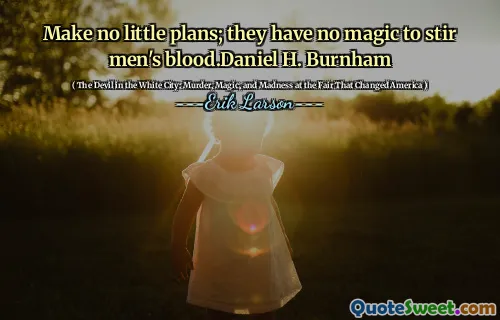Look here, old fellow, do you realize this has been the greatest meeting of artists since the fifteenth century?
In Erik Larson's "The Devil in the White City," a significant theme revolves around the grand scale of the 1893 World's Fair in Chicago, which attracted a multitude of artists and innovators. One character's remark highlights the event's importance, likening it to the pivotal gatherings of the fifteenth century, a period renowned for artistic brilliance and cultural transformation. This meeting of creative minds marked a turning point in American history, showcasing the nation's ambition and artistic talent.
The fair not only served as a platform for artistic expression but also played a crucial role in shaping modern America. It showcased a range of exhibits and introduced groundbreaking ideas, reflecting the nation's progress and aspirations. Larson intricately weaves together narratives of art, architecture, and darker undertones of murder, illustrating the duality of the era—where beauty and horror coexisted amid the celebration of innovation and culture.






